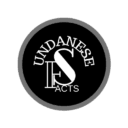Explanation about Lembah Putri and Dewi Ronggeng’s Stopover
Lembah Putri is a location rich in both natural beauty and cultural history. The site was initially known as Bukit Karang Bolong before it was transformed into an agro-tourism destination and renamed Lembah Putri. The renaming was based on local myths and historical connections to ronggeng dancers, particularly Dewi Samboja, a legendary figure believed to have contributed to the development of Ronggeng Gunung, a traditional Sundanese dance.
According to local folklore, Dewi Samboja once stopped in the Karang Bolong cave during her journey. The cave became a significant historical and mystical site, and over time, it was associated with ronggeng dancers who were metaphorically referred to as “princesses.” The ronggeng dance itself has deep cultural roots, often performed with gamelan music, and some villagers believe that echoes of these performances can still be heard around the area.
Despite its cultural and historical significance, Lembah Putri has fallen into neglect. With proper restoration, it could become an important site for both tourism and cultural preservation, highlighting the rich traditions of Pangandaran and its connection to Sundanese performing arts.
Lembah Putri and the Story of Dewi Ronggeng’s Stopover in Pangandaran
The natural tourist attraction with an agro-tourism concept, Lembah Putri, is now in a state of neglect. Lembah Putri is located in Putrapinggan Village, Kalipucang, Pangandaran Regency.
According to information from Google Maps, the place has been permanently closed. The management also appears to have yet to undertake revitalization and development of Bukit Lembah Putri.
Historical Background Lembah Putri
Anang Tarsono, the head of Karangsari Hamlet in Putrapinggan Village, stated that Lembah Putri was formerly known as Ranca Kalong. However, the name Lembah Putri was only officially established in 2022, coinciding with the development of the tourist site.
“At that time, it was officially inaugurated by the Regent of Ciamis, Oma Sasmita, under the name Lembah Putri Agrowisata,” he said.
Meaning Behind the Name
The name “Lembah Putri” comes from two words: “Lembah” and “Putri.” According to the Indonesian Dictionary (KBBI), “Lembah” means lowland (on the left and right of a river, at the foot of a mountain) or a valley, while “Putri” means the daughter of a king or a biological daughter. When combined, “Lembah Putri” can be interpreted as “The Princess of the Valley.”
However, many residents remain curious about the origin of the name Lembah Putri. There are lingering beliefs that a celestial princess once resided there.
“Originally, it was called Bukit Karang Bolong, but after its development into an agro-tourism site, it became Lembah Putri,” he explained.
Cultural Significance
Lembah Putri has its own unique appeal, not only due to its breathtaking panorama but also because of its deep connection to the history of Ronggeng Gunung.
“The Karang Bolong cave area was the resting place of Dewi Samboja, who developed the Ronggeng Gunung art,” he added.
Lembah Putri is still considered a relatively new name because the area consists of many valleys and served as a resting place for ronggeng dancers. “The ‘princess’ referred to here are the ronggeng dancers,” he explained.
Even today, the myth of the sounds of ronggeng gamelan music remains alive. “Yes, some local residents have occasionally heard what sounds like gamelan music in the Lembah Putri area, especially around the Ronggeng Cave,” he said.
Read More:
The Legend of Karang Nini and Bale Kambang: A Tale of True Love from Pangandaran








1 comment